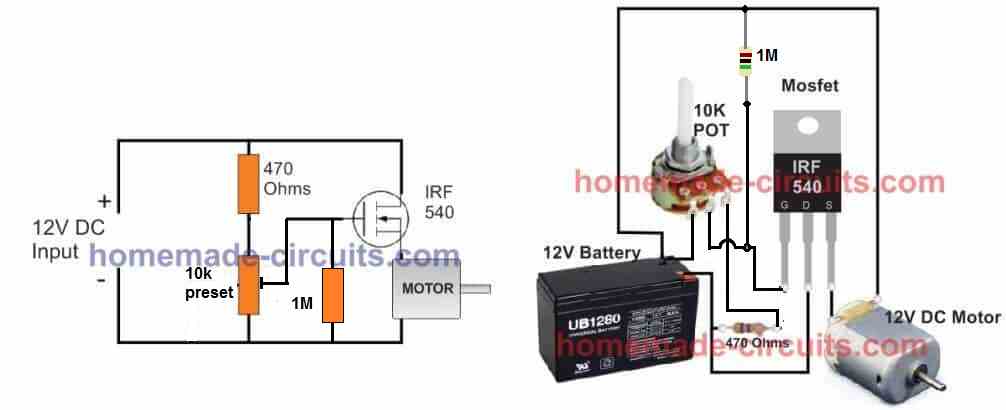Just did some testing with a cheapo dosing pump like this.
I think the controller DC ports are the basically the same as the ML adapter. That has darlington pairs which is two BJT's working together, I think the end result is the same. If you look at Design #1 on this page you'll see how controller DC ports are setup, the PWM from pca9685 controls the mosfet though.

5 Simple DC Motor Speed Controller Circuits Explained
The article presents 3 types of DC motor speed controller circuits using a simple mosfet and potentiometer, next using a IC 555 and then with IC 556www.homemade-circuits.com
At full speed (12v) changing the pca9685 frequency from 50 - 1000 has no visual or audio affect.
With freq set to 1000 the speed can be turned down to 47 which was 5.8v, the pump was running ok, left for 5 minutes no heat.
With freq set to 50 the speed could go down to 28 but that resulted in the same 5.8v. I think I could hear I high pitched squeal but barely.
If I went lower in speed (voltage) the pump would run but not enough juice to start up. So 6v for a 12v pump, sounds good.
Then I tried a 12v LED strip light with similar results but could see more effect with frequency changes.
At 1000hz, speed 1 it was 6.67v so light was quiet bright.
At 50hz, speed 1 it was 2.4v but light was flickering quite badly.
Finally settled at 60hz and it's 2.6v no visual flicker but I'm sure it's there and light is very dim.
Good stuff right there! I'll keep this in my back pocket. I did notice that when I lowered frequency to 100 from 800 the pump became more audible. I
Also this makes me want to use a DC port to power my sump light LED strip, pretty sure it's a 12v; rather than powering it from the wall.

















